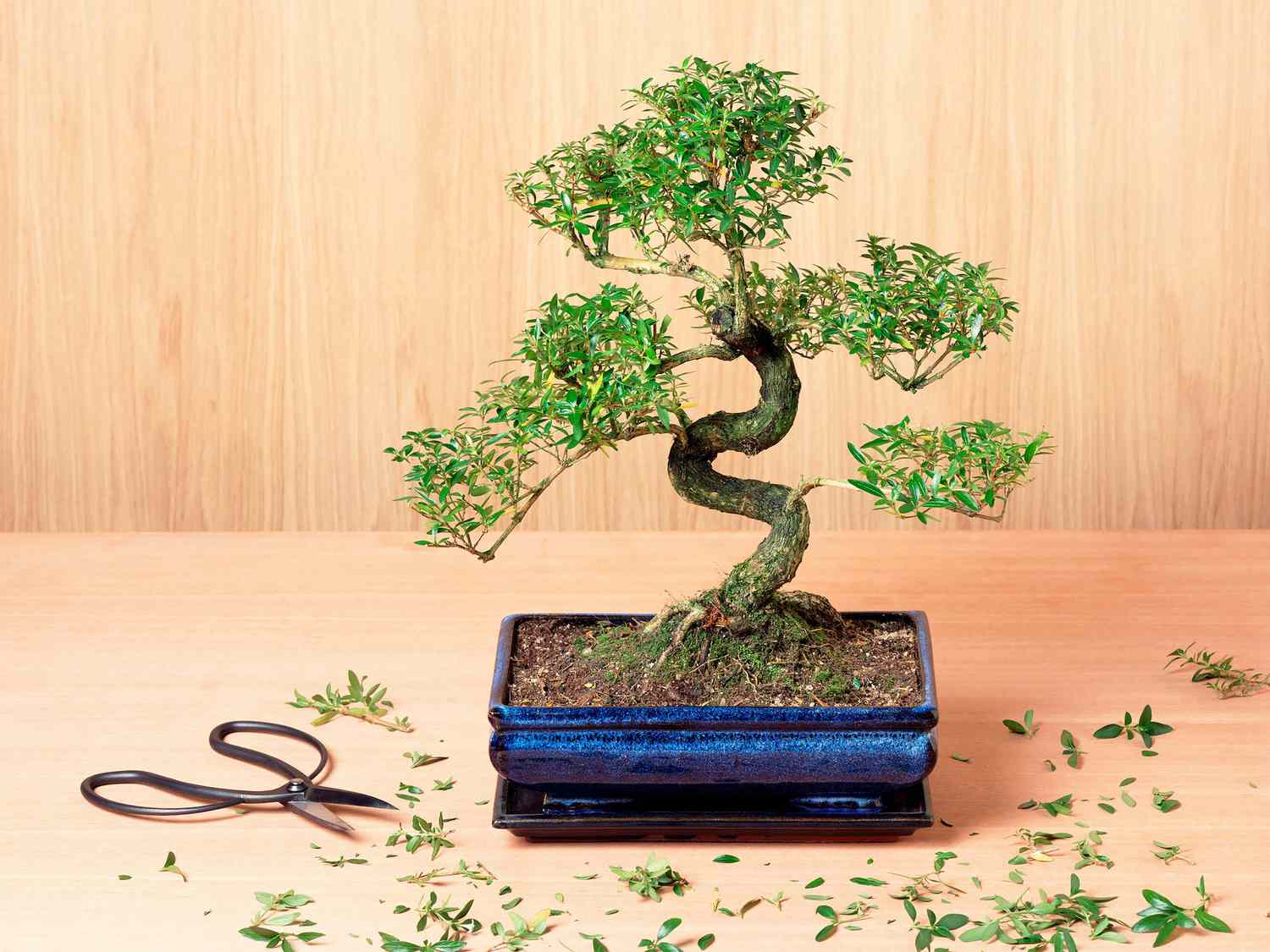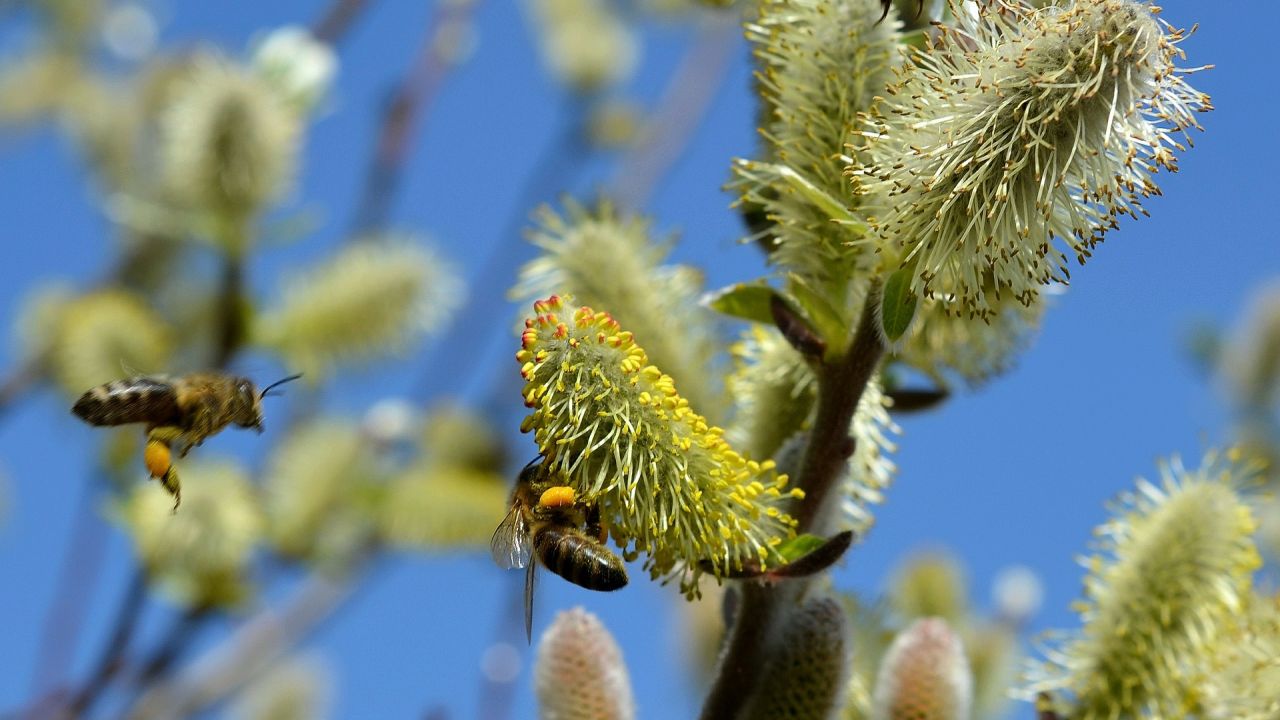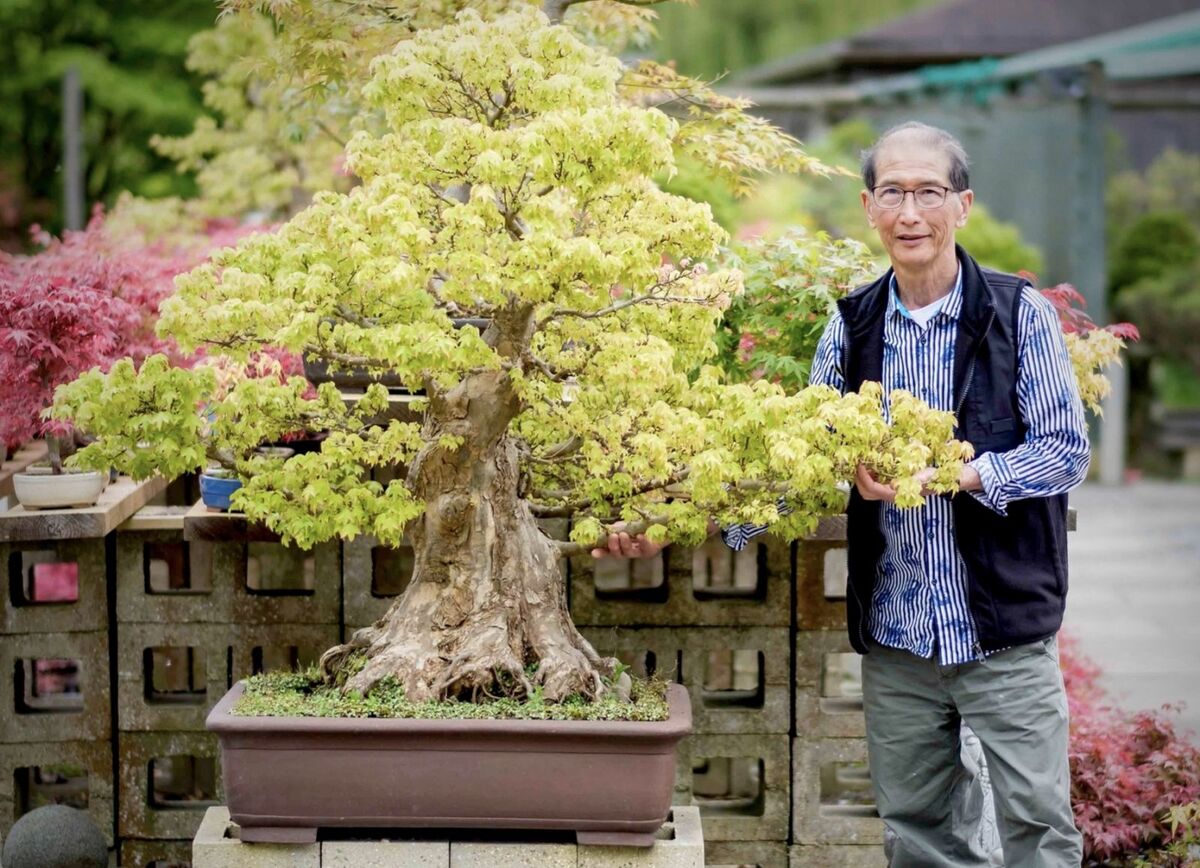Home>Types of Gardening>Ornamental Gardening>What Temperature Do Bonsai Trees Like


Ornamental Gardening
What Temperature Do Bonsai Trees Like
Modified: January 22, 2024
Discover the ideal temperature range for bonsai trees and learn how to care for them in your ornamental gardening.
(Many of the links in this article redirect to a specific reviewed product. Your purchase of these products through affiliate links helps to generate commission for Chicagolandgardening.com, at no extra cost. Learn more)
Table of Contents
Introduction
Welcome to the world of ornamental gardening, where the beauty of plants is transformed into art. One of the most fascinating aspects of this craft is the art of cultivating bonsai trees. These miniature trees are carefully trained and pruned to create intricate shapes and patterns, capturing the essence of nature in a compact form.
However, in order to successfully grow and maintain bonsai trees, it is crucial to understand their specific needs and preferences. One of the key factors that significantly impacts the health and growth of bonsai trees is temperature. Understanding the temperature preferences of bonsai trees is essential to create the optimal environment for their development.
Bonsai trees are not unlike their larger counterparts when it comes to temperature requirements. Just like regular trees, bonsai trees have a preferred temperature range that allows them to thrive. Factors such as the origin of the tree species, its hardiness, and its tolerance to extreme temperatures play a major role in determining the ideal temperature conditions for the tree.
In this guide, we will explore the factors that affect bonsai tree temperature preferences, the optimum temperature range for different types of bonsai trees, and the temperature considerations during different seasons. Additionally, we will delve into the techniques and practices that can be employed to manage temperature effectively, ensuring the overall well-being of your bonsai trees.
Whether you are a seasoned bonsai enthusiast or a beginner exploring the world of ornamental gardening, understanding the temperature preferences of bonsai trees can help you create the perfect environment for these captivating living artworks to flourish.
Factors Affecting Bonsai Tree Temperature Preferences
Several factors influence the temperature preferences of bonsai trees. Understanding these factors is crucial in providing the optimal temperature conditions for the well-being and growth of your bonsai trees.
Origin of the Tree Species: Different species of bonsai trees have evolved in various climatic conditions worldwide. Understanding the native climate of your bonsai tree species is essential in determining its preferred temperature range. For example, a bonsai tree species originating from a tropical region will have a higher temperature preference compared to a species from a colder climate.
Hardiness: The hardiness of a bonsai tree refers to its ability to withstand extreme temperatures. Some bonsai tree species are more tolerant of cold temperatures, while others thrive in warmer climates. The hardiness of a bonsai tree species influences its temperature preferences, as it will require specific temperature ranges to remain healthy and continue growing.
Seasonal Variations: Bonsai trees, like any other plant, experience seasonal variations in temperature. It is important to consider these fluctuations and adjust the temperature conditions accordingly. For example, during the winter season, when temperatures drop significantly, certain measures need to be taken to protect bonsai trees from frostbite or freezing.
Microclimate: The location where you place your bonsai tree plays a significant role in determining its temperature preferences. Factors such as sunlight exposure, wind intensity, and nearby structures can create microclimates that affect the temperature around your bonsai tree. Understanding the microclimate of your bonsai tree’s location will help you provide the most suitable temperature conditions.
Container Size: The size of the container or pot in which your bonsai tree is planted can impact its temperature preferences. Smaller containers tend to heat up more quickly, while larger containers offer more insulation and stability in temperature. Consider the container size and material when determining the best temperature conditions for your bonsai tree.
Other Environmental Factors: Besides temperature, other environmental factors like humidity and airflow can also influence the temperature preferences of bonsai trees. Some species thrive in humid environments, while others prefer drier conditions. Providing the optimal combination of temperature, humidity, and airflow is essential for the health and vitality of your bonsai tree.
By considering these factors and tailoring the temperature conditions accordingly, you can create the ideal environment for your bonsai trees to thrive and flourish.
Optimum Temperature Range for Bonsai Trees
The optimum temperature range for bonsai trees varies depending on the species and their natural habitat. Understanding the ideal temperature conditions for your bonsai trees is key to their health and development. Here are some general temperature guidelines for common bonsai tree species:
- Tropical Bonsai Trees: Bonsai tree species originating from tropical regions typically prefer temperatures between 65°F (18°C) and 85°F (29°C). These trees thrive in warm and humid conditions, so it is important to provide them with a consistent, moderate temperature range.
- Temperate Bonsai Trees: Bonsai trees that come from temperate regions, such as maples or oaks, prefer a wider temperature range. They can tolerate cooler temperatures during the winter, ranging from 40°F (4°C) to 60°F (16°C), and warmer temperatures during the summer, ranging from 65°F (18°C) to 85°F (29°C).
- Subtropical Bonsai Trees: Bonsai trees originating from subtropical regions, like ficus or bougainvillea, thrive in a temperature range of 60°F (16°C) to 85°F (29°C). They can tolerate slightly cooler temperatures during the winter, but it is crucial to protect them from frost or freezing conditions.
- Coniferous Bonsai Trees: Coniferous bonsai trees, such as pine or juniper, have different temperature preferences depending on the specific species. However, most conifers prefer cooler temperatures and can withstand cold winters. A temperature range of 40°F (4°C) to 60°F (16°C) during the winter and 60°F (16°C) to 75°F (24°C) during the summer is generally suitable.
It is important to note that these are only general guidelines and may vary depending on the specific species and their individual preferences. Additionally, sudden temperature changes or prolonged exposure to temperatures outside of their preferred range can stress bonsai trees and negatively impact their growth.
Monitoring the temperature conditions around your bonsai trees and making adjustments as needed is vital to their overall health and survival. Consider factors such as natural sunlight exposure, indoor or outdoor placement, and seasonal variations when maintaining the temperature in the optimal range for your bonsai trees.
By providing the right temperature conditions, you can help your bonsai trees thrive and showcase their natural beauty throughout the year.
Cold Hardy Bonsai Trees
If you live in a region with cold winters, it is important to choose bonsai tree species that are cold hardy and can withstand freezing temperatures. Cold hardy bonsai trees are capable of surviving and thriving even in challenging winter conditions. Here are a few popular cold hardy bonsai tree species:
- Juniper: Juniper bonsai trees are known for their hardiness and ability to tolerate cold temperatures. They can withstand freezing temperatures and even survive in climates with snow. Junipers have an elegant, rugged appearance, making them a popular choice among bonsai enthusiasts.
- Pine: Pine bonsai trees are highly adaptable and can withstand a wide range of temperatures, including cold weather. They have resilient needles that can endure frost and freezing conditions. Pines are appreciated for their unique trunk shapes and needle arrangements.
- Spruce: Spruce bonsai trees are well-suited for colder climates and can tolerate freezing temperatures. They have a distinctive conical shape and short, dense needles that make them visually appealing. Spruces are known for their hardy nature and resistance to harsh winter conditions.
- Maple: Some varieties of maple bonsai trees, such as Japanese maple, are cold hardy and can survive in colder regions. While they may benefit from some protection during severe winters, they can withstand moderately cold temperatures without issue. Maple bonsai trees are sought after for their vibrant foliage and stunning autumn colors.
When cultivating cold hardy bonsai trees, it is important to provide some winter protection, especially during extreme cold spells. Techniques such as wrapping the pot in insulation or placing the bonsai tree in a sheltered location can help protect it from freezing winds and temperature fluctuations.
It is also essential to avoid excessive water during winter, as this can lead to root rot when the temperature drops. Watering should be reduced, allowing the soil to dry out slightly between watering sessions. This helps prevent the roots from freezing and maintains the overall health of the bonsai tree.
Remember, while these trees are cold hardy, it is important to be mindful of the specific care requirements of each species. Some may require more protection and attention during winter than others. Consulting with local experts or bonsai communities can provide valuable insights into the best practices for keeping cold hardy bonsai trees healthy and thriving in your specific climate.
By selecting and properly caring for cold hardy bonsai trees, you can enjoy the beauty and tranquility of these miniature wonders, even in colder regions.
Heat Tolerant Bonsai Trees
For those who live in regions with hot climates or experience scorching summers, heat-tolerant bonsai trees are the perfect choice. These species are adapted to withstand high temperatures and thrive in hot conditions. Here are a few heat-tolerant bonsai tree species:
- Bougainvillea: Bougainvillea bonsai trees are known for their vibrant colors and ability to withstand intense heat. They thrive in hot climates and can handle full sun exposure. Bougainvilleas are cherished for their beautiful flowers and can add a touch of tropical charm to any bonsai collection.
- Ficus: Ficus bonsai trees, also known as fig trees, are highly adaptable and tolerant of warm temperatures. They can endure direct sunlight and high humidity. Ficus trees have glossy leaves and can be trained into various bonsai styles, making them a popular choice among bonsai enthusiasts.
- Crassula: Crassula, commonly known as Jade plants, are succulent bonsai trees that are well-suited for hot and arid climates. They have fleshy leaves that store water, making them drought tolerant. Crassula bonsai trees are easy to care for and have a unique appearance that adds a touch of elegance to any bonsai collection.
- Olive: Olive bonsai trees are native to Mediterranean regions and are accustomed to hot and dry climates. They can withstand high temperatures and direct sunlight. Olive trees have small, silver-gray leaves and gnarled trunks, giving them a distinctive and timeless beauty.
When cultivating heat-tolerant bonsai trees, it is important to ensure proper hydration during hot weather. Adequate watering is crucial to prevent the bonsai tree from drying out. Regular watering sessions should be carried out, taking into account the specific watering needs of each species.
Additionally, providing some shade during the hottest parts of the day can help protect the bonsai trees from excessive sun exposure. This can be achieved by placing them under a shade cloth or positioning them in a location that receives partial shade.
Proper ventilation and airflow are also important considerations for heat-tolerant bonsai trees. Ensuring that the bonsai tree is not in an excessively hot or stagnant environment can help prevent heat stress and promote healthy growth.
Remember to monitor the soil moisture levels and adjust watering frequency as needed to ensure the bonsai tree remains properly hydrated in the heat. Consulting with local experts or bonsai communities can provide valuable insights into the specific care requirements for heat-tolerant bonsai trees in your climate.
By selecting and caring for heat-tolerant bonsai trees, you can create a flourishing and captivating bonsai garden even in the hottest of climates.
Temperature Considerations during Different Seasons
As the seasons change, so do the temperature conditions surrounding our bonsai trees. It is essential to understand and account for these seasonal temperature variations to ensure the health and well-being of our precious bonsai trees throughout the year.
Spring: Spring brings a shift from colder to milder temperatures. This period is crucial for the bonsai tree’s growth as it enters its active growth phase. During spring, it is important to gradually increase watering and provide ample sunlight to encourage leaf growth. As the temperature gradually rises, it is crucial to monitor for the potential emergence of pests and diseases.
Summer: Summer is often characterized by hot temperatures and increased sunlight exposure. It is important to protect bonsai trees from excessive heat and dehydration. Providing shade during the hottest parts of the day and adjusting watering frequency can help prevent the bonsai tree from drying out. Adequate airflow is also crucial to prevent heat stress and promote healthy growth during summer.
Fall: Fall brings cooler temperatures and shorter daylight hours. During this time, bonsai trees start preparing for dormancy. It is crucial to gradually reduce watering and provide slightly cooler temperatures to encourage the bonsai tree’s transition into dormancy. Fall is also an ideal time to carry out necessary pruning and repotting before the onset of winter.
Winter: Winter is a challenging season for bonsai trees, especially in colder regions. It is crucial to protect the bonsai tree from freezing temperatures and provide adequate insulation. Techniques such as wrapping the pot in insulation or placing the bonsai tree in a sheltered location can help prevent frost damage. Reducing watering and avoiding fertilization during winter is necessary as the bonsai tree enters a period of dormancy.
Throughout the year, monitoring the temperature conditions around your bonsai trees and adapting their care accordingly is vital. By paying attention to seasonal temperature considerations, you can provide optimal conditions that promote healthy growth and ensure the longevity of your bonsai trees.
Remember, every bonsai tree species has unique temperature preferences, so it is essential to research and understand the specific needs of each tree in your collection. Consulting with local bonsai experts or joining bonsai communities can provide valuable insights into the best practices for temperature management during different seasons in your particular climate.
Temperature Management Techniques for Bonsai Trees
Proper temperature management is crucial for the health and growth of bonsai trees. By employing effective temperature management techniques, you can create the ideal environment for your bonsai trees to thrive. Here are some techniques to consider:
- Shading: Providing shade during the hottest parts of the day can protect bonsai trees from excessive heat and sunburn. This can be achieved by using shade cloths, placing the bonsai trees under trees or structures, or creating artificial shade with umbrellas or screens.
- Ventilation: Ensuring proper airflow around your bonsai trees helps prevent heat stress and encourages healthy growth. Placing bonsai trees in areas with adequate ventilation, such as near windows or in open spaces, can help regulate the temperature and optimize airflow.
- Watering: Proper watering is essential for temperature management. During hot weather, watering should be adjusted to prevent drying out or overwatering. It is important to monitor soil moisture levels and water bonsai trees thoroughly and evenly, allowing the soil to dry out slightly between watering sessions.
- Misting: Misting the foliage of bonsai trees during hot weather can help cool them down and increase humidity. This is particularly beneficial for species that prefer higher humidity levels. Misting in the early morning or late afternoon can provide relief from the heat without causing excessive moisture on the leaves.
- Insulation: In colder climates or during winter months, insulation is crucial to protect bonsai trees from freezing temperatures. Techniques like wrapping the pot in insulation material, such as burlap or bubble wrap, or placing the tree in a sheltered location can help shield it from harsh winter conditions.
- Microclimate manipulation: Creating a microclimate around your bonsai trees can help regulate temperature. Placing the trees near walls or structures that absorb and radiate heat, or using reflective materials to redirect sunlight, can influence the local temperature and protect the trees from extreme conditions.
It is important to note that different bonsai tree species have varied temperature preferences, so it is crucial to research and understand the specific needs of each tree in your collection. Regular monitoring of temperature conditions, coupled with adjustments in care, can significantly impact the overall health and well-being of your bonsai trees.
Consulting with local experts or joining bonsai communities can provide invaluable insights and guidance on temperature management techniques specific to your region. By implementing these techniques, you can create a conducive environment that promotes optimal growth and longevity for your beloved bonsai trees.
Conclusion
Understanding and managing the temperature preferences of bonsai trees is essential for their growth, health, and overall well-being. By considering factors such as the origin of the tree species, their hardiness, and seasonal variations, we can create the optimal temperature conditions to promote their flourishing.
For cold-hardy bonsai trees, providing winter protection and adjusting watering practices during freezing temperatures is crucial. Heat-tolerant bonsai trees benefit from adequate hydration, shade during hot weather, and proper airflow. Furthermore, considering temperature variations during different seasons and employing appropriate techniques such as shading, ventilation, and insulation can help maintain a stable and comfortable environment for the trees.
Remember, each bonsai tree species has its own unique temperature preferences, so it is important to research and understand the specific needs of your trees. Consulting with local experts and joining bonsai communities can provide valuable guidance tailored to your specific climate and region.
By incorporating temperature management techniques into your bonsai care routine, you can create an ideal environment that promotes healthy growth, prevents stress or damage, and allows your bonsai trees to thrive. Embrace the art of temperature management, and watch as your bonsai trees transform into breathtaking living artwork basking in their optimum temperature range.



